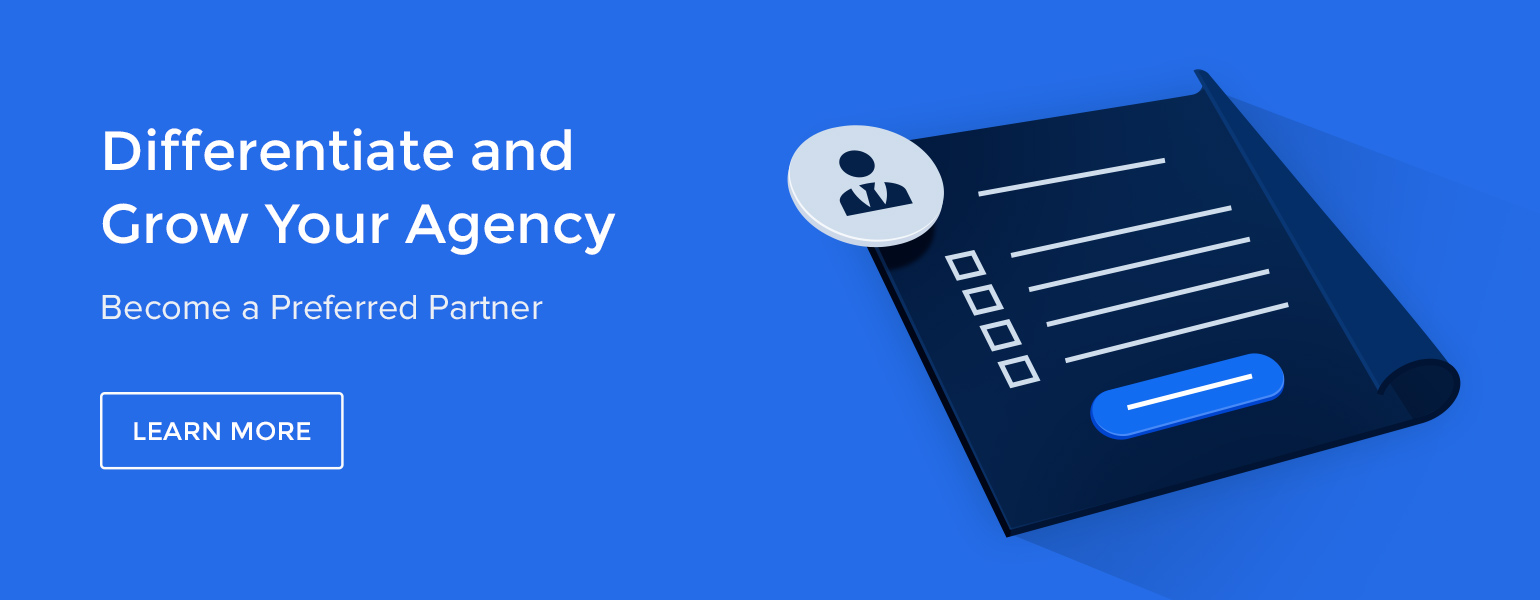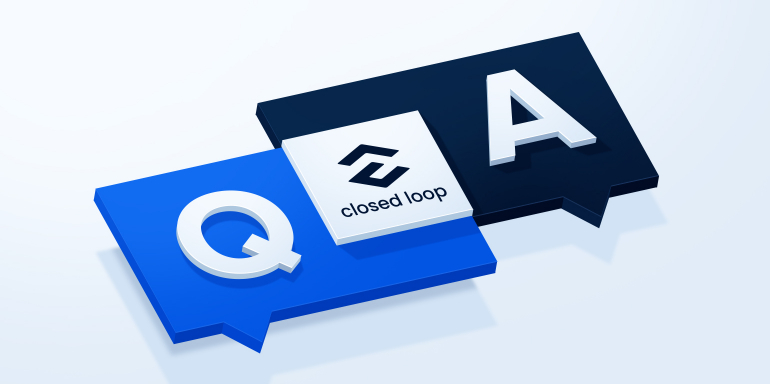- What Google Ads tactics worked before, but won’t in the future?
- Same question, but for Facebook
- What is overlooked in Google Ads?
- Same question for Facebook
- How do AI and machine learning play a role with paid ads?
- How does personalization play a role with paid ads?
- What are 1-2 ways you can insert personalization into paid ads & post-click landing pages?
- What results do your clients see with personalization?
- Digital advertising and post-click optimization
You may recall the Q&A with Elite SEM back in January where they discussed Google and Facebook Ads tactics advertisers should pay attention to, and how personalization and machine learning can affect campaigns.
Next up in this agency series is Amanda Evans, Chief Advertising Officer, at Closed Loop. You will notice the responses vary quite a bit from Elite SEM. That is expected, and this goes to show that digital advertising today is very complex and agencies should constantly be evaluating their paid strategies.
What are a few Google Ads tactics you think has worked well in the past, but won’t work in the future?
AE: There are three I want to bring attention to:
- Single Keyword Ad Groups (SKAGs) — This structure no longer works and simply starves the machine learning algorithms. Instead, tightly themed ad groups with 10-15 keywords tend to work best. We will use a single keyword ad group ONLY for extremely high volume keywords, but this is rare.
- True A/B split testing — It’s virtually impossible to do a true A/B split test on ads anymore, and there is no need to anyway. Both Google and Facebook’s algorithms do a pretty amazing job optimizing to the best performers.
- Negative 100% device bids — This one may be controversial, but advertisers that are opting out of mobile completely will be left behind. Today’s consumers (including B2B) are flipping between devices faster than ever before. The idea that people only search on the device that they’re going to convert on is short-sighted.
Same question as above, but for Facebook ads…
AE: Similar to Google Ads, true A/B split testing is nearly impossible to do. The amount of ad formats, platforms, and placements on the Facebook network has grown exponentially. A/B testing now would hold performance for the entire account back. And, the reality is that the algorithm does a great job ‘choosing’ the right winner so there is no need to do A/B testing.
Also, we see granular structures no longer working as well as they used to. Success comes when you ‘feed the machine’ — give it as much data as possible so it’ll figure out the best variations to serve.
What is something in Google Ads you think is overlooked but going to be big in 2019?
AE: Two things come to mind…
- Audience targeting / layered targeting. We’re beginning to see the incredible power of layering audiences, both first and third party audiences, onto search campaigns for improvements in cost-per-acquisition. This is particularly important for clients where there are duplicate meanings of similar keywords. We see this issue a lot in the B2B space and audience layering helps us break through the clutter.
- Structuring campaigns to work with smart bidding algorithms, but also to enable tighter budget control. Some old practices of structuring campaigns, in particular SKAG, work against bidding algorithms. We’re finding that structures need to change to let the algorithms perform as well as they can.
Same question as above, but for Facebook Ads…
AE: For Facebook, I think the following are overlooked:
- The ability to augment Facebook’s Audience Targeting with 3rd party data integration. While the number of Facebook audiences have decreased over the past year, 3rd party data providers have not only filled the void but expanded capabilities. We can tailor ads to fit an audience with much more granularity than ever before. It opens up a whole new set of opportunities for advertisers.
- Mobile optimized video. As of last year, 95% of Facebook users were accessing Facebook from a smartphone. While marketers understand the growth of mobile, it seems that few advertisers are leveraging it. We see incredible success from our mobile optimized video campaigns with significant increases in both CTR and conversion rates.
How do you see AI and machine learning playing a role with paid ads going forward?
AE: AI and machine learning’s role in paid ads is still evolving but we expect its mindshare to grow substantially over the next year.
On the bidding front, Google & Facebook’s algorithms are showing promise but some critical gaps exist. For AI & machine learning to realize their potential, Facebook & Google will need to give some control back & flexibility to those that manage the campaigns.
There are two key areas that we expect (hope?) to be fixed this year:
- The data the algorithms use may not be the same data that the advertiser cares about. For example, in the B2B space, Google & Facebook have access to leads but few advertisers are giving them access to MQLs. Machine learning can only optimize what it has access to. It’s likely that we’ll see 3rd parties creating integrations to pipe advertisers internal data into the Facebook & Google platforms.
- The algorithms are often slow to react to large-scale changes or campaign ‘hiccups.’ We often find that large budget or target changes have a big impact on performance with machine learning. For example, if tracking goes down for a couple of days, it wreaks havoc on performance for the next couple weeks. I expect Google & Facebook to provide flexibility to exclude certain time periods from the algorithm.
With respect to using machine learning to build ads, I think this is longer off. We see Facebook & Google attempting to go that direction but for large advertisers, this gets dicey quickly. The performance of Responsive Search Ads and responsive display has been mixed at best. Advertisers are concerned about brand compliance and messaging. So while we expect the engines to continue moving down that path, we see enough hesitation from advertisers to think this will take a bit longer to grow.
How do you see personalization playing a role with paid ads in 2019 and beyond?
AE: We expect personalization to continue to improve throughout 2019 and beyond. Social ad networks, specifically Facebook, have the data marketers need to deliver personalized marketing content, but, of course, are very mindful of the implications. The balance between marketing personalization and respecting a user’s privacy will be tough, especially in light of Facebook’s recent troubles.
That said, social marketers have the power to create tailored content using tactics like custom audiences and account-based marketing. Using first and third party data and tailored messaging provides a great balance between respecting a users privacy while still delivering personalized ads. Good data and segmentation has been and will continue to be the key to leveraging personalization, and I expect marketers to continue investing in data science in the years to come.
What are 1-2 ways digital marketers can insert personalization into paid ads and post-click landing pages?
AE: I think we’re going to see personalization follow the customer’s life cycle or sales funnel. Smart advertisers will use personalization not only to map ad campaigns to each stage in the sales funnel but more importantly to their depth of data that the advertiser has about each user.
Technology now gives advertisers the ability to use the data they have to build a rich profile for each user and use that profile to better target and personalize ads. That is a marked difference from the “anonymous” audiences of the past.
Now we have some intelligence about users that can be leveraged to better target ads and better craft messaging to those users. While we have not reached the Holy Grail of true personalization for every individual we’re targeting, at minimum we will be able to group users into different audiences and maybe deploy a matrix of different targeting methods so that we can get close to personalized marketing.
We can now target and customize creative on a post-click landing page to a user based on what we know about them. By marrying this capability with first and third party data, the possibilities are virtually endless.
At Closed Loop, we’re excited about this because very few advertisers are taking advantage of it. So it feels like a green field opportunity, and that’s always exciting when you have the opportunity to be one of the first to dive into such unexplored territory. Getting in early creates a source of competitive advantage as you can continually stay a little bit ahead of the rest of the advertisers in that industry. Essentially, it gives you the advantage and that’s what we attempt to do for our clients.
What results do your clients see after personalizing their ads and the post-click landing page?
AE: Amazing results! Not an incremental 10 to 15% improvement, either.
We see an exponential 200% to 500% improvement when we can truly custom target an offer in the ad and post-click landing page. That’s part of the reason it’s so exciting to us.
The challenge is getting advertisers to really see and believe in personalized ads and post-click landing pages. It sounds almost too good to be true initially (and we were skeptics ourselves) but the data is clear and speaks so loudly that we’d be remiss if we didn’t encourage all of our clients to pursue personalization with everything they’ve got.
Digital advertising and post-click optimization
Regardless if your brand uses Google, Facebook (or both) for paid ads, you owe it to yourself and your clients to maximize results from all campaigns. Post-click optimization is often a missing component to many digital advertisers today, but a critical one because it’s what happens after the click that generates conversions.
Get more information by partnering with Instapage and see what your campaigns are missing.

